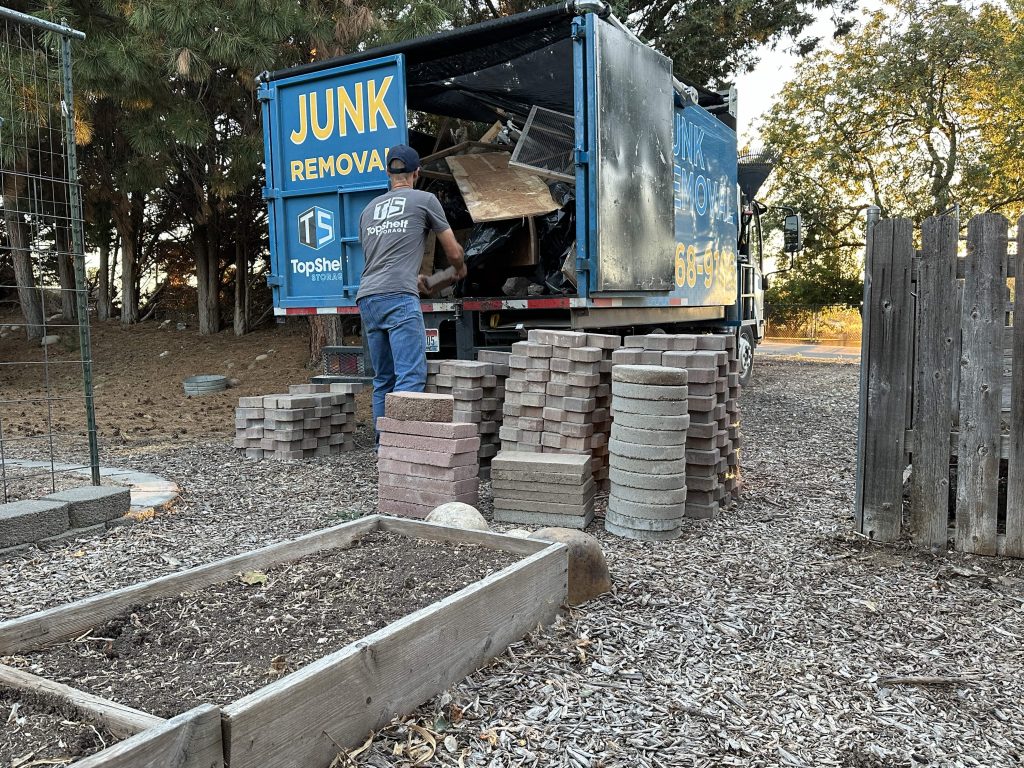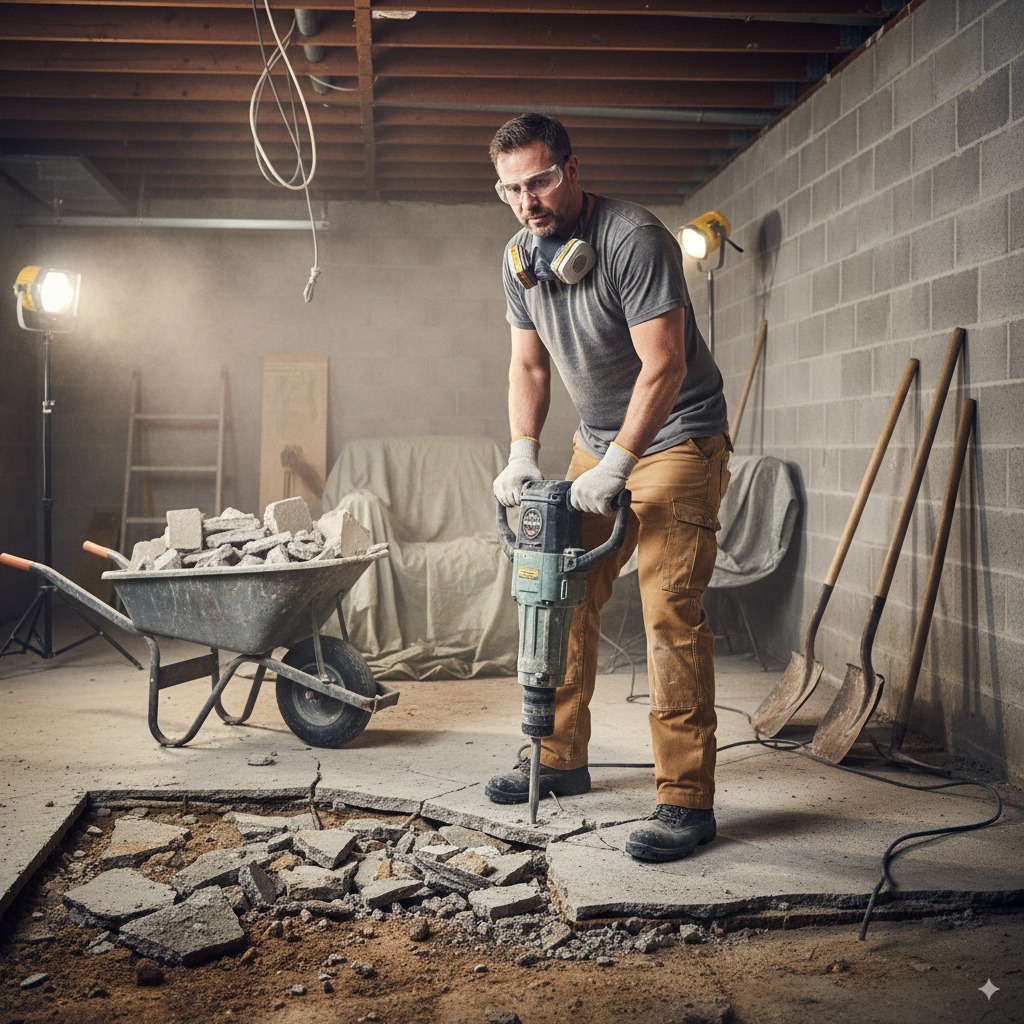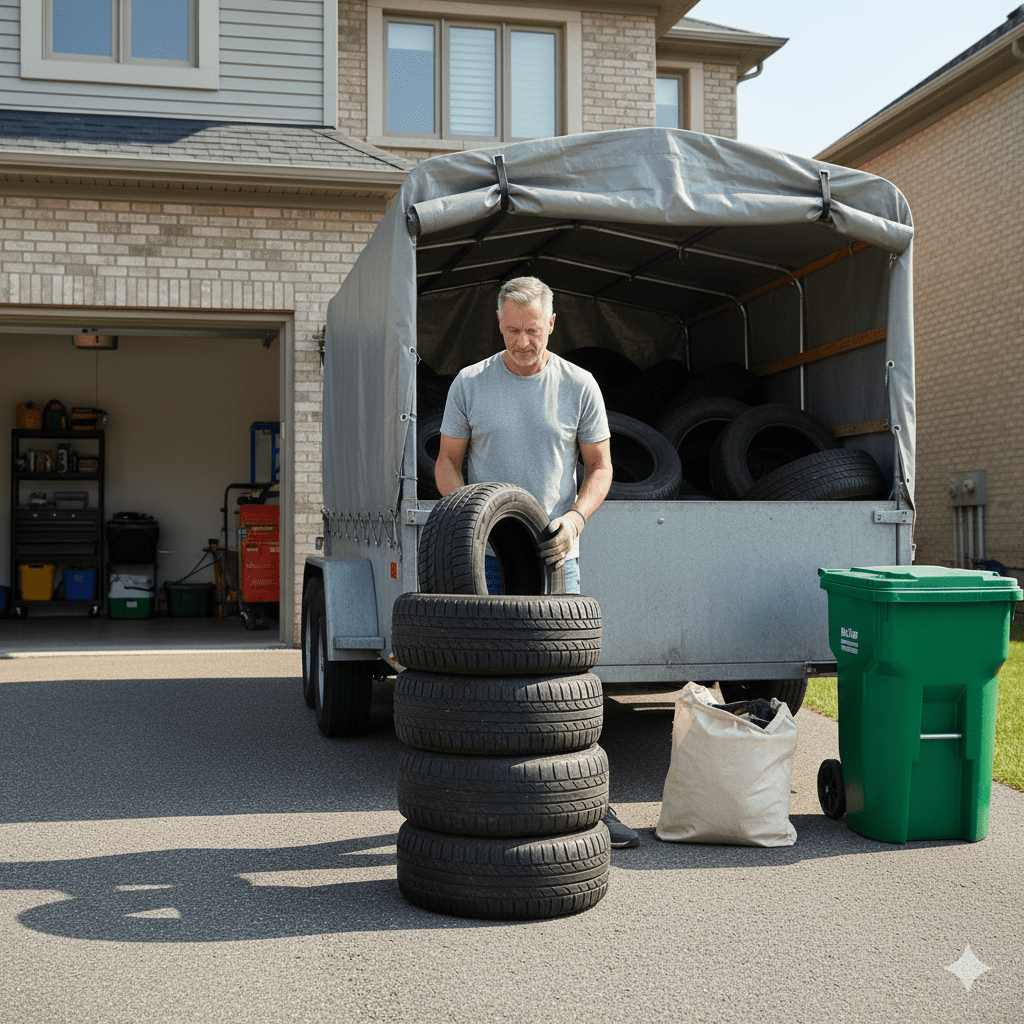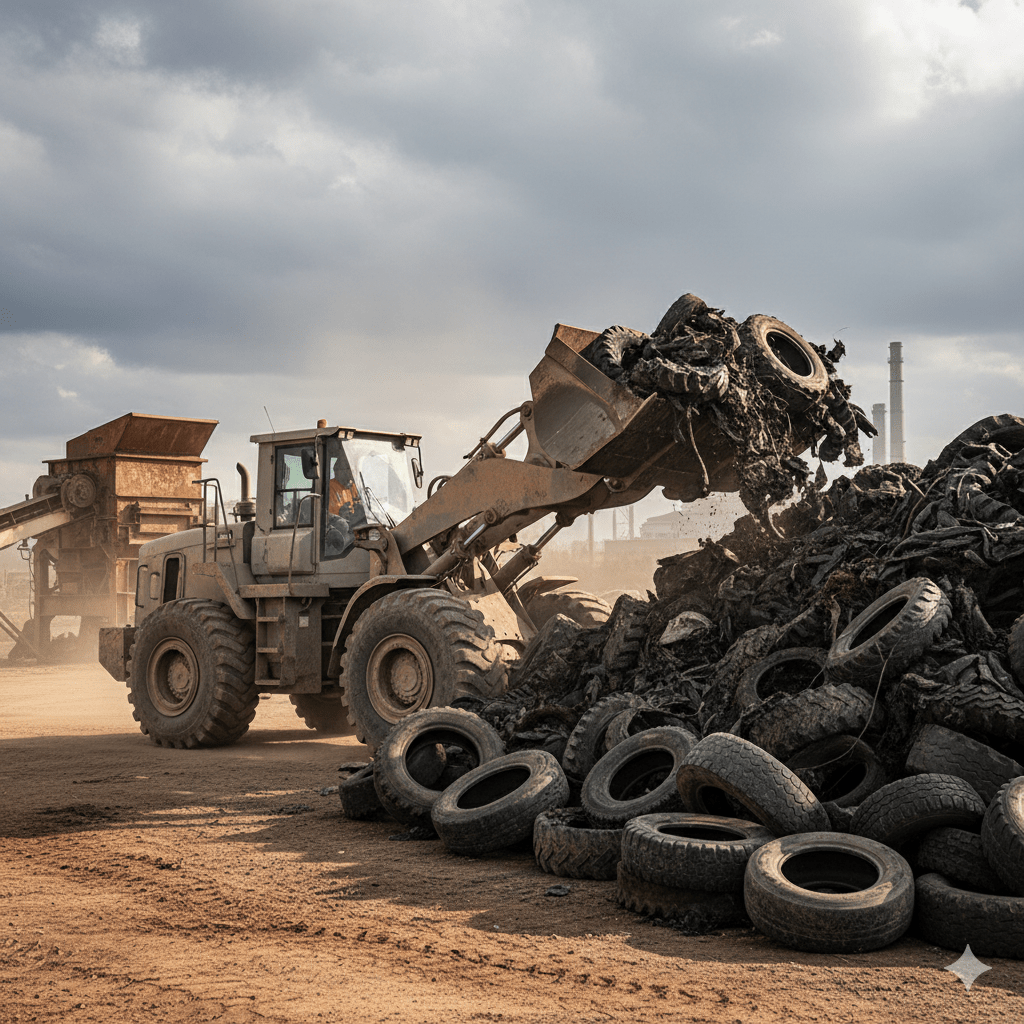Concrete looks harmless until you try to evict it. Then it turns into a cranky landlord with a steel spine and a lawyer on retainer. Break it wrong and you burn a weekend, your shoulders, and your patience. Break it right and the slab surrenders in neat, stackable chunks that leave your yard and your pride intact. Here’s the plan: choose the right tools, cut the slab into a problem you can lift, control dust and debris, and keep your body out of the injury lottery. And if the slab starts fighting above your weight class, the best concrete removal services exist for a reason—call them before the project calls an ambulance.
Tools Required for Breaking Up Concrete
You don’t need a truck full of toys; you need the right few used correctly.
- PPE first: ANSI Z87+ eye protection, hearing protection, heavy gloves, steel-toe boots, and a respirator rated for silica (N95 minimum; P100 is better). Long sleeves help when shards fly.
- Demolition power:
- Electric breaker (60–90 lb) for 4–6″ slabs.
- SDS-Max demolition hammer for edging, steps, and precision chipping.
- Sledge (10–12 lb) when you want to feel heroic for exactly four swings.
- Cutting/scoring:
- 14″ cut-off saw with a diamond blade and water feed to score grids and control crack lines.
- Angle grinder with a 4.5–7″ diamond blade for tight corners and rebar nubs.
- Leverage & separation: 5–6 ft wrecking bar, trenching shovel, cold chisel, and a short 4×4 block to make a pivot under your bar.
- Metal control: Bolt cutters for mesh; reciprocating saw or grinder with metal blade for rebar.
- Dust & site control: Garden hose or pump sprayer (mist, not firehose), tarps, and plywood/mats to protect lawns and create a stable hauling path.
- Hauling: Contractor wheelbarrow, landscape dolly, or a flat cart. Your back is not equipment—treat it like a limited-edition model.
Pro move the best crews use: measure thickness at an edge and probe for steel before you start. Surprises are a budget line item. Don’t create one.
Renting Heavy Equipment for Large Projects
There’s “hand tools and grit,” and then there’s “please hand me a machine.”
- When to rent a breaker: Slabs over ~200 sq ft, thickness above 5″, or obvious reinforcement. An electric 70–90 lb breaker turns “all day” into “before lunch.”
- Walk-behind concrete saw: If you can score 2’–3′ grids full-depth (with water), everything breaks cleaner and lifts easier. Worth it for driveways and garage pads.
- Mini-excavator or skid steer with a breaker: For 400+ sq ft or heavy rebar. Make sure your gate/access, slope, and soil will actually let it in; lay mats to protect turf.
- Power & logistics: Electric breakers like a dedicated 20A circuit and GFCI. Cut-off saws want water (dust control and blade life). Trailers, ramps, tie-downs—rent what keeps the day safe and legal.
- Reality check: If the plan needs a machine you’re not trained to run in tight spaces near glass, gas, or neighbors’ favorite things, that’s your cue. The best concrete removal services come with the right operator, not just the right excavator.

Techniques for Safe Concrete Removal
Brute force is Plan Z. Precision breaks concrete faster.
- Map the slab. Note thickness, joints, edges, nearby utilities, and where you can stage debris.
- Score a grid. Cut 2’–3′ squares. Smaller squares for thicker slabs or lots of steel. Water feed on; dust down.
- Start at a free edge. No free edge? Create one: saw a starter trench at the perimeter or break a corner to expose subgrade.
- Break, then lift. Aim the breaker at cracks and score lines; keep it vertical and let the tool do the work. Use your bar and a 4×4 to pop sections up—concrete fails in tension when lifted.
- Deal with steel deliberately.
- Wire mesh: pry up, snip with bolt cutters, keep fingers out of the tangle.
- Rebar: expose, cut with grinder/recip saw, cap sharp ends. Don’t guess where it runs—verify before you cut near walls or footings.
- Work in lanes. Break a row, clear it, stage chunks, repeat. Chaos creates trips and wasted motion.
- Keep it clean as you go. Mist to suppress dust, shovel chips into tubs, and maintain a safe walking path. Slurry stays on the slab—don’t wash it into soil or drains.
Small win that feels like a cheat code: undercut thicker spots. Dig a narrow trench along one side so the piece can lift and snap instead of flexing and laughing at you.
Disposing of Concrete Waste Responsibly
The job isn’t done when the slab is in pieces; it’s done when the pieces are gone.
- Sort for savings. “Clean” concrete (no dirt, trash, excessive steel) usually goes cheaper to recyclers than to the landfill. Mixed loads cost more.
- Know your weights. Concrete is heavy—roughly 4,000–5,000 lbs per cubic yard. A half-ton pickup does not carry a half yard safely. Plan multiple loads or rent a heavy-debris dumpster (often a 10-yard “low boy” with weight limits).
- Reuse on site (if allowed): Sub-base for pavers, fill for deep holes (compacted in lifts), or landscape riprap. Don’t bury against foundations or block drainage.
- Paper trail: Keep scale/dump tickets. If your city needs a disposal receipt, you already have it.
- Permits/placement: Street dumpsters often require permits and safety cones. Ask before the HOA asks you—with a fine attached.
What top-tier pros do: separate on site, haul to the right facility, and staple dump tickets to your invoice. Copy the habit and you’ll copy the savings.
Safety Tips for DIY Concrete Removal
You’re the supervisor and the worker. Make decisions like you care about both.
- Silica is real. Wet-cut or mist when breaking. Wear that respirator. Don’t dry sweep; use a HEPA vac or shovel.
- Utilities before enthusiasm. Identify electric, gas, water, and irrigation. In the U.S., call 811; elsewhere, use your local locate service or a qualified tech. If you see conduit in the slab, stop and reassess.
- Body mechanics: Lift with legs, not twist with ego. Team-carry larger pieces. Use carts. Keep fingers out of pinch zones.
- Electric safety: GFCI on tools, cords in good condition, no puddles around plugs.
- Control your site: Barricade pets/kids, mark a single haul path, and keep bystanders out of the swing radius.
- Edge awareness: Don’t stand below raised slabs or between a breaker and a wall. Never trust a piece that’s “mostly cracked.”
- Hazmat caution: Black mastics, weird old tiles, or crumbly coatings can mean asbestos/lead. When in doubt, pause and test—don’t create a health problem to solve a patio problem.
- Weather and fatigue: Heat, noise, vibration—take breaks, hydrate, rotate tasks. A tired person makes expensive choices.
And the honest exit ramp: if you uncover 8″+ thickness with tight rebar, footings stitched to the house, or you’re working inches from glass and gas—tap out. The best concrete removal services bring diamond saws, trained operators, engineered dust control, and the insurance you wish you had five minutes ago.
Bottom line
DIY concrete removal isn’t about heroics; it’s about sequence. Measure, score, break, lift, sort, haul. Keep dust down, keep fingers intact, and keep receipts. Do that and the slab disappears on your terms. If it doesn’t? Hand the fight to a crew that lives for this—the best concrete removal services will finish the job cleanly, legally, and without turning your weekend into a cautionary tale.






